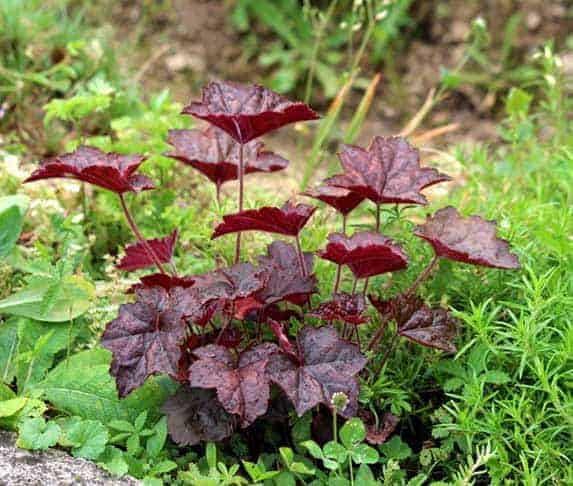Animals and gardens know they are a poor combination, but this does not have to be so!
Follow these dog-friendly gardens to hold your pet safely and happily – and your crops.
A dog-friendly garden does not compromise on aesthetics, but when landscaping an environment, your furry buddy will reach it. There are several items to remember. Some of the most popular trees for dogs are Crepe Myrtle, Amur Maple, and the aromatic Bamboo Palm.
Dogs like to go to the yard and to play.
With careful dog-friendly garden architecture, protect your plants.
First, you must consider your dog’s disposition and physical condition.
So, to choose the best trees for your dog, refer to our recommendations below.
1. Amur Maple

Acer ginnala is the medicinal name of Amur Maple.
It rises to twenty feet. Because of the beautiful color of their buds in the fall, these trees are widespread.
In autumn, before they collapse, they become bright crimson.
Amur Maple is indeed safe for house pets and dogs as they will love its immense elegance.
The warmer months are near, but you do not have to worry about keeping it indoors.
It is preferable to plant in the fall since the cold conditions are gone, making it simpler to roll up and refurbish your yard.
Not to mention, this plant is hard to plant up to -30 degrees during the fall because it is an eye-catching emblem for the season.
The main advantage? This tree is not harmful to domestic animals who walk in your yard.
2. Bamboo Palm

While this dog-friendly tree is a shrub, it needs ample room in your backyard.
This flower stalk is not harmful to dogs, according to the ASPCA. It could surprise you; the bamboo palm is NOT bamboo.
The ASPCA states that while some palm varieties are poisonous for pets, bamboo palm is not toxic.
However, dog owners should be careful not to eat any plant parts for their pets.
3. Coral Bells

This annual plant originates from the North American region and used for therapeutic reasons historically.
The technical term associated with this plant is Heuchera sanguinea, but in the scientific community, it is called Heuchera.
The coral cloves are produced in various shades, from green to black.
The genus is distinct, and many of those members of the Saxifragaceae family are deemed dog safe.
These plants are not bought for their flowers or planted because they are not long and are very poor compared to the plant’s leaves.
The shades and finishes are broad-ranging, including matte or silky.
They are safe for pets and have very little upkeep for a great deal of room.
4. Crepe Myrtle

These trees are commonly cultivated in colder areas of the country, scientifically recognized as Lagerstroemia.
It is simple to keep this species, as, by daily pruning, you may keep it very thin.
Because of their bright flowers, Crepe Myrtles are also used in homes and public spaces as ornamentals.
The elegant bark often contributes to the charm of this tree.
These sturdy, hardy trees are secure for your dog anytime you choose to maintain your garden dog-friendly.
Many lovely plants produce pollutants that damage puppies and other animals.
Moreover, the American Society for the Prevention of Animal Cruelty states that crepe myrtle is harmless and not dangerous to humans and animals.
5. Dill

Not only is this aromatic herb natural, but it is also helpful for pets.
It comes in the form of an edible plant that helps the digestion of your puppy.
It inhibits inflammation, diabetes, and various other issues of health as an antioxidant.
You have a lot of space to grow this plant, as it will spread very quickly.
Dill’s leaves and seeds are used for flavoring foods worldwide, but you can find enough of this plant in European food.
6. Dogwood Tree

Next up is the dogwood tree.
The unparalleled elegance of dogwood trees is the ultimate explanation for their success in all seasons.
However, the most awe-inspiring spring flowering and berries are likely.
Black, pink, and light red berries are irresistible in combination.
Because of their ease of maintenance, they are also more suited for house gardens.
They are still perfectly appropriate for dogs, making them the perfect pick for your backyard.
Dogwood plants are not generally harmful to dogs, so you do not have to worry. But if you go for plants like Crocosmia, some complications might occur.
7. Honey Locust

Unlike black savannah, this kind of plant is suitable for pets.
The fruit is often used in animal feed.
Certain chemical products of this product are often used to cure human conditions such as autoimmune diseases, including cancer.
The tree develops very steadily until it exceeds up to 30 meters above sea level.
This species is endemic to Central North America and is classified scientifically as Gleditsia triacanthos.
In the humid river valleys, it often develops but can be adapted to other conditions.
Key Takeaway
Dogs are considered tough on gardens, so a landscape of crops that can cope with violence is a great idea.
If you decide to directly plant into the field instead of in a decorative pot, begin with more mature plants (#1 size or bigger) and plant in thick clusters where appropriate.
Older plants are often longer-lasting, with most dogs avoiding heavily cultivated fields.
While several plant varieties must be selected, they are common choices for easy treatment, longevity, and vitality.
Nature Hills loves dogs, and we ensured that in our catalog, we added above the best dog-friendly plants that you can always come back.


